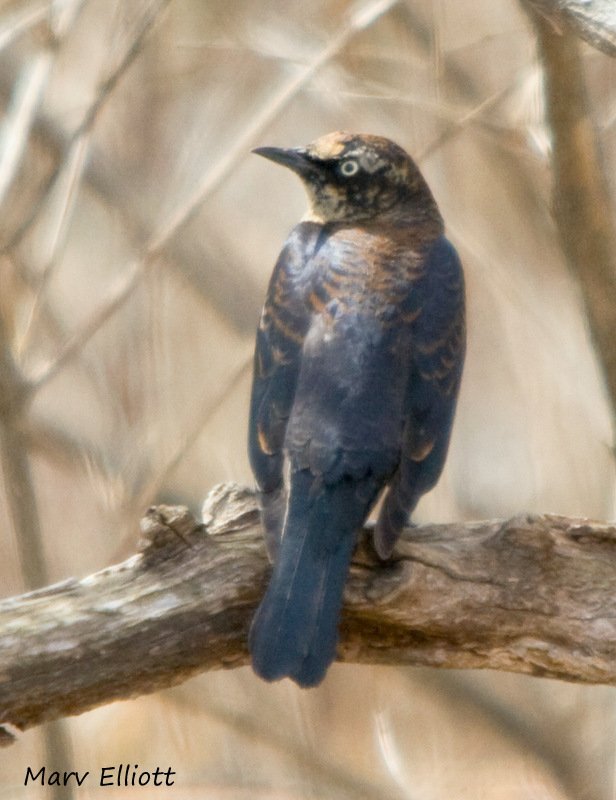The following is by Bruce MacPherson, Green Mountain Audubon Society:
 Rusty Blackbird populations have plummeted by over 85% in the past half century and no one knows why. Recognition of the catastrophic decline of this once-common bird eluded birders and conservation biologists until the past decade. Now a group of international investigators led by the International Rusty Blackbird Working Group is studying this problem by collecting data during the Rusty Blackbird's spring migration.
Rusty Blackbird populations have plummeted by over 85% in the past half century and no one knows why. Recognition of the catastrophic decline of this once-common bird eluded birders and conservation biologists until the past decade. Now a group of international investigators led by the International Rusty Blackbird Working Group is studying this problem by collecting data during the Rusty Blackbird's spring migration.
The count period for the Rusty Blackbird Spring Migration Blitz in Vermont ended on Saturday, April 30. Thanks to everyone who participated in this citizen-science project.
Rusties finally moved through Vermont in good numbers during the last week of the count. Overall 761 Rusty Blackbirds were reported to VT eBird during our count period of March 15-April 30 compared to 658 in 2015 and 1090 in 2014. In the five years prior to the Blitz (2009-2013) the average number of Rusties reported during the count period was 187. The increased numbers in 2014-2016 are almost certainly the result of the increased effort by Vermont birders to find and report Rusty Blackbirds. Click here to see an eBird map of Vermont's sightings.
Rusty Blackbirds breed in marshes and bogs in the boreal forests of Canada and the northern United States, including Vermont's Northeast Kingdom. Vermont is at the southeastern edge of the Rusty Blackbird's breeding grounds. During the Second Vermont Breeding Bird Survey nesting sites for this frequently overlooked bird declined in the western part of Vermont, but increased in the northeastern highlands, possibly due to increased effort directed toward finding their nests. Nonetheless, only 20 nests were recorded in the second atlas down from 26 in the first survey. In 2014, at the urging of several conservation groups Rusty Blackbirds were added to the list of Vermont's endangered species. Understanding the factors affecting Rusty Blackbirds on their breeding grounds, wintering habitat, and migration stopovers will be essential first steps toward stabilizing the population.
Congratulations to Jim Osborn, who reported 184 Rusty Blackbirds along the Maquam Bog/ Old Railroad Passage Trail at the Missisquoi NWR on April 23, the highest count in Vermont this year. This observation along with those of several other observers establishes the refuge as the main stopover point for Rusties in migration in Vermont.
But as Yogi reminds us "It's not over until it’s over." Last year only 67% of the Rusties in Vermont during migration were counted between March 15 and April 30. A significant number of Rusty Blackbirds will likely migrate through Vermont during the next two weeks. To get a full picture of the scope of Rusty migration Vermont birders are encouraged to visit Rusty Blackbird habitat during May and report their counts to VT eBird.
Interestingly, Rusty Blackbird breeding in the northeast has already begun. An occupied nest was found in New Hampshire on April 29 and Rusties have shown up at Moose Bog, a Vermont breeding site, during the past week.
So let's get out there and count those birds. Every Rusty Blackbird counts!